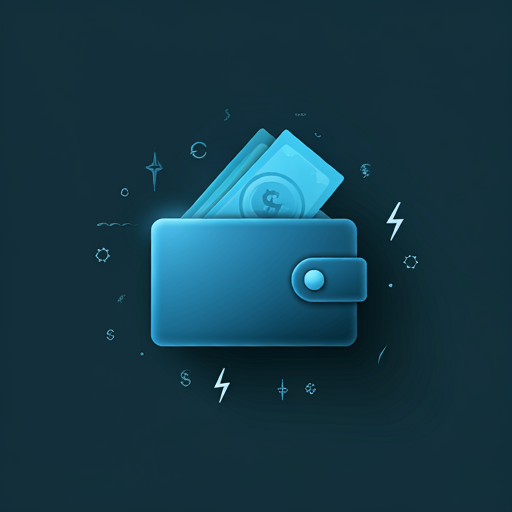The Rise of Digital Wallets: Revolutionizing Payments
Definition and Functionality
Digital wallets are electronic applications that facilitate the storage and management of payment information. They enable users to conduct transactions seamlessly, often through mobile devices. This technology enhances user experience by providing quick access to funds and transaction history.
Key functionalities include:
Security features, such as encryption and two-factor authentication, protect sensitive data. These measures are crucial in today’s digital landscape.
Historical Context and Evolution
Digital wallets emerged in the late 1990s, initially as simple online payment systems. They evolved significantly with the rise of smartphones and mobile technology. This shift allowed for more user-friendly interfaces and enhanced functionalities. The convenience of making payments on-the-go became a game changer.
As technology advanced, features like contactless payments and integration with loyalty programs were introduced. These innovations increased user adoption. Today, digital wallets are integral to e-commerce and everyday transactions. They simplify financial interactions.
Types of Digital Wallets
Hot Wallets vs. Cold Wallets
Hot wallets are connected to the internet, allowing for quick access to funds. They are ideal for frequent transactions. However, this connectivity increases vulnerability to cyber threats. Security is a major concern.
Cold wallets, on the other hand, are offline storage solutions. They provide enhanced security for long-term asset holding. This method is less convenient for daily use. Users must weigh accessibility against security. Both options serve distinct purposes in asset management.
Mobile Wallets and Desktop Wallets
Mobile wallets are applications on smartphones that allow users to make payments and manage funds easily. They offer convenience for everyday transactions. He can access his wallet anytime. Desktop wallets, in contrast, are software installed on personal computers. They provide a more secure environment for managing larger amounts of cryptocurrency. He may prefer this for long-term storage. Each type servds different user needs effectively.
Benefits of Using Digital Wallets
Enhanced Security Features
Digital wallets incorporate advanced security features to protect user data. These include encryption and biometric authentication methods. Such measures significantly reduce the risk of unauthorized access. Security is paramount in financial transactions. Additionally, many wallets offer two-factor authentication for added protection. This extra layer enhances user confidence. Regular updates also help address potential vulnerabilities. Staying secure is essential in today’s digital landscape.
Convenience and Accessibility
Digital wallets provide unparalleled convenience for users managing their finances. For instance, he can make transactions instantly from his mobile device. This accessibility streamlines the payment process significantly. Additionally, digital wallets often integrate with various financial services. This integration simplifies budgeting and expense tracking. He appreciates having everything in one place. Furthermore, the ability to store multiple currencies enhances flexibility. It’s a practical solution for modern financial needs.
Challenges and Risks
Security Vulnerabilities
Digital wallets face several security vulnerabilities that can jeopardize user data. For example, phishing attacks can trick users into revealing sensitive information. This risk is significant in the digital landscape. Additionally, malware can compromise wallet security, leading to unauthorized access. Users must remain vigilant against such threats. Regular software updates are essential for protection. Staying informed is crucial for maintaining security.
Regulatory and Compliance Issues
Digital wallets encounter various regulatory and compliance issues that can impact their operation. For instance, he must navigate differing regulations across jurisdictions. This complexity can hinder seamless transactions. Additionally, anti-money laundering (AML) and know your customer (KYC) requirements impose strict guidelines. Compliance is essential for maintaining legitimacy. Failure to adhere to these regulations can result in significant penalties. Understanding these challenges is vital for effective risk management.
The Role of Blockchain Technology
How Blockchain Enhances Wallet Security
Blockchain technology significantly enhances wallet security through its decentralized nature. This structure reduces the risk of single points of failure. He benefits from increased transparency in transactions. Additionally, cryptographic algorithms secure data integrity and authenticity. This ensures that unauthorized alterations are nearly impossible. Regular audits of the blockchain further bolster trust.
Smart Contracts and Digital Wallets
Smart contracts operate on blockchain technology, enabling automated transactions without intermediaries. This efficiency reduces costs and enhances transaction speed. He can execute agreements securely and transparently. Additionally, smart contracts ensure that terms are met before funds are released. This feature minimizes the risk of disputes. The integration of smart contracts with digital wallets streamlines processes. It simplifies complex financial interactions significantly.
Future Trends in Digital Wallets
Integration with Other Financial Services
Digital wallets are increasingly integrating with various financial services, enhancing their functionality. For instance, he can link his wallet to investment platforms for seamless transactions. This integration allows for real-time asset management. Additionally, partnerships with banks facilitate easier fund transfers. Such collaborations improve user experience significantly. Furthermore, the incorporation of budgeting tools within wallets aids financial planning. It’s a smart way to manage finances.
Impact of Central Bank Digital Currencies (CBDCs)
Central Bank Digital Currencies (CBDCs) are poised to transform the financial landscape significantly. They offer a state-backed alternative to cryptocurrencies. This development could enhance trust in digital transactions. Additionally, CBDCs may streamline payment systems and reduce transaction costs. He might benefit from faster cross-border payments. The integration of CBDCs with digital wallets is likely to growth adoption. It’s an exciting evolution in finance .
Conclusion
Summary of Key Points
Digital wallets offer enhanced security, convenience, and integration with financial services. He can manage his assets efficiently. The rise of blockchain technology further strengthens wallet security. This innovation minimizes risks associated with digital transactions. Additionally, the emergence of CBDCs may reshape the financial landscape. It’s essential to stay informed about these developments. Understanding these key points is crucial for effective financial management.
Final Thoughts on the Future of Payments
The future of payments is increasingly digital and interconnected. As technology advances, he will benefit from greater efficiency. Innovations like blockchain and CBDCs will reshape transaction methods. This evolution enhances security and reduces costs. Additionally, the integration of digital wallets with various services will streamline financial management. Staying updated is essential for adapting to these changes. The landscape is rapidly evolving.
